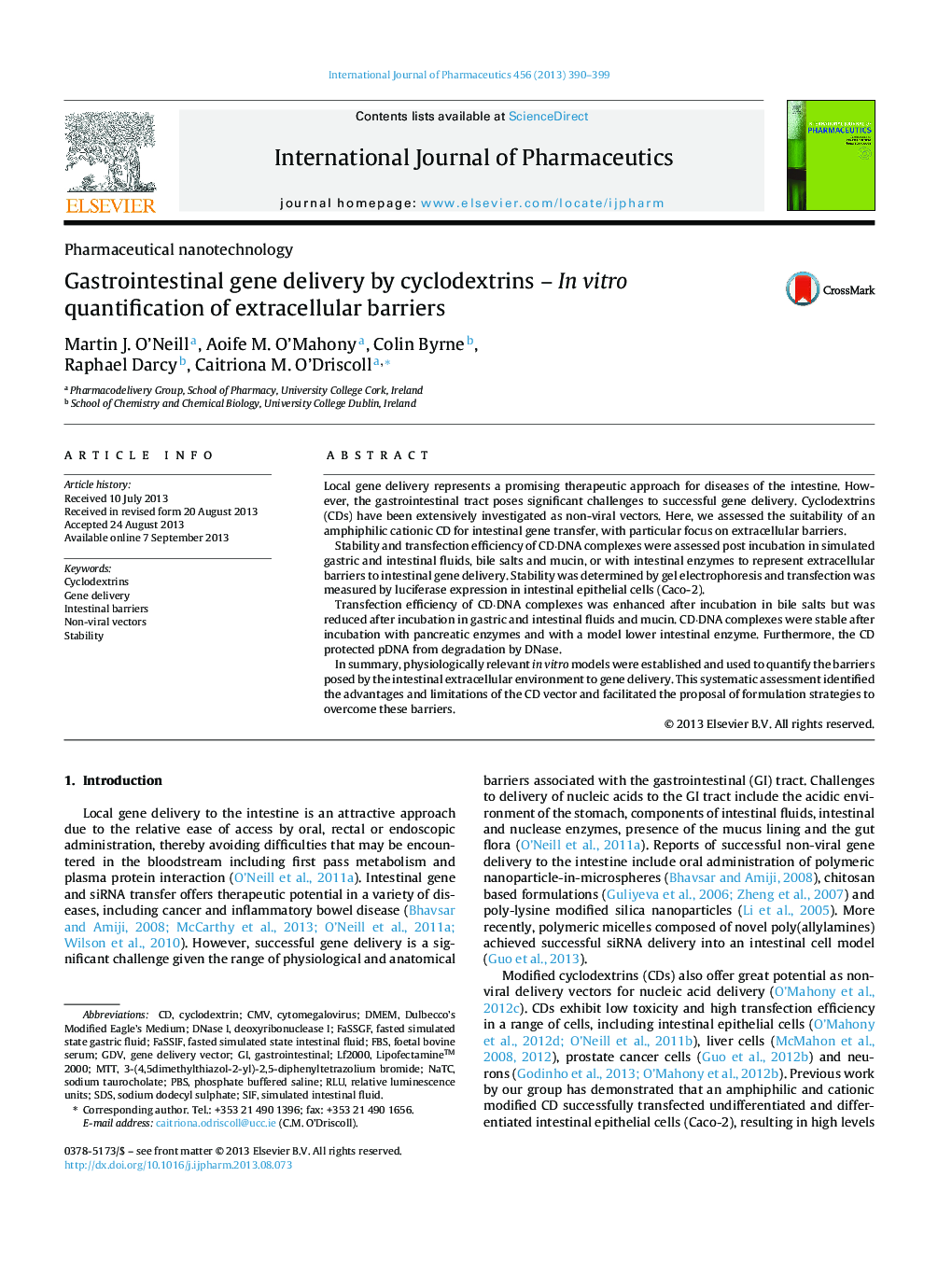| Article ID | Journal | Published Year | Pages | File Type |
|---|---|---|---|---|
| 2502161 | International Journal of Pharmaceutics | 2013 | 10 Pages |
Local gene delivery represents a promising therapeutic approach for diseases of the intestine. However, the gastrointestinal tract poses significant challenges to successful gene delivery. Cyclodextrins (CDs) have been extensively investigated as non-viral vectors. Here, we assessed the suitability of an amphiphilic cationic CD for intestinal gene transfer, with particular focus on extracellular barriers.Stability and transfection efficiency of CD·DNA complexes were assessed post incubation in simulated gastric and intestinal fluids, bile salts and mucin, or with intestinal enzymes to represent extracellular barriers to intestinal gene delivery. Stability was determined by gel electrophoresis and transfection was measured by luciferase expression in intestinal epithelial cells (Caco-2).Transfection efficiency of CD·DNA complexes was enhanced after incubation in bile salts but was reduced after incubation in gastric and intestinal fluids and mucin. CD·DNA complexes were stable after incubation with pancreatic enzymes and with a model lower intestinal enzyme. Furthermore, the CD protected pDNA from degradation by DNase.In summary, physiologically relevant in vitro models were established and used to quantify the barriers posed by the intestinal extracellular environment to gene delivery. This systematic assessment identified the advantages and limitations of the CD vector and facilitated the proposal of formulation strategies to overcome these barriers.
Graphical abstractFigure optionsDownload full-size imageDownload high-quality image (122 K)Download as PowerPoint slide
